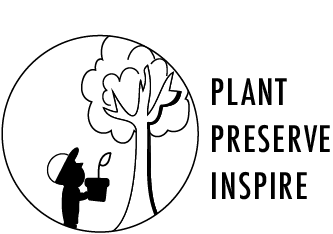List of Facts: The Benefits of Trees
Ecosystem Services
- A review of 14 studies across five continents showed that landscapes with trees are able to reduce rainwater runoff, improve the quality of the runoff water, and increase cooling by evapotranspiration from their leaves. – The Morton Arboretum
- Trees clean the air, regulate climate, reduce noise pollution, and provide rainwater drainage. Dr. Bolund and Dr. Hunhammer, Ecological Economics
- One acre of forest absorbs six tons of carbon dioxide and puts out four tons of oxygen. This is enough to meet the annual needs of 18 people. U.S. Department of Agriculture
- In 2010, urban trees in the continental United States were responsible for removing over 17 million metric tons of air pollution, which had a health benefit valued at almost $7 billion. – Dr. Nowak et al., Environmental Pollution
- One hundred mature trees catch about 139,000 gallons of rainwater per year. – U.S. Department of Agriculture
Social Benefits
- Trees and well-maintained landscaping make people feel safer- Dr. Kuo et al., Journal of Arboriculture
- An increase in tree canopy cover in a neighborhood has been documented to increase social capital for individuals and encourage neighborhood connections. (Holtan et al. 2014) - Dr. Holtan et al., Environmental Behavior
- Greenness is associated with lower crime rates, more play activity with children, and a greater sense of safety as compared to barren areas. - The Morton Arboretum
Health Benefits
- Trees are saving more than 850 human lives a year and preventing 670,000 incidences of acute respiratory symptoms. – The U. S. Forest Service
- Children are less likely to be overweight in greener neighborhoods compared to ones that are not as green. – Belle et al., American Journal of Preventive Medicine
- Increased density of street trees in an urban area has been associated with a lower prevalence of asthma among children. - Lovasi et al., Journal Epidemiology Community Health
- Living near green spaces associated with reduced mortality- Villeneuve et al., Ontario, Canada. Environmental Research
- Increase in attention, positive emotions, and reflection- White et al., Environment and Behavior
Financial
- Positive return on investment in tree planting and maintenance
o For every dollar invested annually in tree planting and maintenance in five major cities, there was a return of $1.37 to $3.09, based on the benefit of trees (i.e. energy savings, atmospheric CO2 reductions, stormwater runoff reductions, etc.).- McPherson et al., Journal of Arboriculture
- There are about 60– to 200-million spaces along our city streets where trees could be planted. This translates to the potential to absorb 33 million more tons of CO2 every year, and saving $4 billion in energy costs. National Wildlife Federation
- Trees can save money on road maintenance. - McPherson et al., Journal of Arboriculture
- There is an association that homes will have a 3.5 to 4.5 percent greater selling price if there are trees on the property. – Dr. Anderson and Dr. Cordell, Landscape and Urban Planning
- Trees properly placed around buildings can reduce air conditioning needs by 30 percent and can save 20–50 percent in energy used for heating. USDA Forest Service
- Trees can be a stimulus to economic development, attracting new business and tourism. Commercial retail areas are more attractive to shoppers, apartments rent more quickly, tenants stay longer, and space in a wooded setting is more valuable to sell or rent. The Arbor Day Foundation
Sources
https://www.fs.usda.gov/learn/trees
https://www.arborday.org/trees/benefits.cfm
http://chicagorti.org/sites/chicagorti/files/5%20Scientific%20Benefits%20of%20Trees%20(1).pdf

